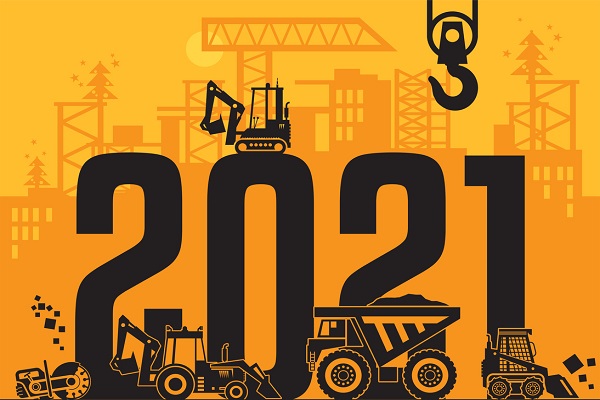What 2020’s new home trends might say about 2021
The National Association of Realtors (NAR) recently released its 2020 Profile of Buyers and Sellers. The report shows many trends in the housing market throughout 2020. Today, we’ll go through some of the most interesting facts about the market for new homes, what these trends might say about 2021, and how 2-10 Home Buyers Warranty (2-10 HBW) can help you take advantage of these trends.
The share of new homes purchased was up in 2020
In 2020, 15% of all homes purchased were new homes. That’s a small increase from 13% in 2019. However, because of a shortage of new homes available, this 15% rate is still fairly low.
The slight uptick in new homes purchased is a bit of a double-edged sword. The increase in new homes purchased is good in itself. However, it still highlights the long road for home builders in terms of providing an adequate supply to meet demand. Between labor shortages, high lumber prices, and the lingering effects of the COVID-19 pandemic, supply challenges will likely continue throughout 2021.
Despite these challenges, the fact that the share of new homes purchased saw an increase is a reason for confidence.
There were 3 big reasons why buyers of new homes wanted new homes at all
According to the NAR’s report on new home trends, there were three big reasons why buyers bought new homes over previously owned homes.
- 44% wanted to avoid renovations, and plumbing and electrical problems.
- 30% liked choosing or customizing their home’s design features.
- 24% liked the community amenities that a newly constructed home offered.
The top reason why buyers purchased new homes was to avoid renovations and avoid plumbing and electrical problems. It’s not much of a secret that move-in readiness is an important driver for buyers, especially younger buyers. What’s interesting is that buyers are clearly stating their desire to avoid plumbing and electrical problems.
A builders warranty from 2-10 HBW speaks directly to these desires.
With a builders warranty from 2-10 HBW, you get protection against qualified structural defects. That speaks to the general desire for move-in readiness. But you also get two years of coverage for problems with distribution systems, such as plumbing and electrical systems.
A builders warranty provides clearly defined standards regarding your responsibilities when there’s a defect in the plumbing and electrical systems. And because these standards come from a third party (2-10 HBW), they provide two important benefits to your buyers.
- They help set expectations for buyers, giving them more confidence in the quality of their home.
- They provide buyers a solution when there actually are issues with plumbing or electrical systems.
Consider how a buyer might feel if they were to move into a new home that you just built, only to have problems with their electrical or plumbing system.
Whether it was directly your fault, the fault of subpar subcontractors, or something else, those buyers will expect a timely solution. After all, chances are good they bought your new house to avoid this very problem. A builders warranty helps you tackle these issues before they become problems.
Space and affordability are still important new home trends for buyers
One of the more recognizable new home trends in the 2020 report was a desire among buyers for space and affordability. For example, 60% of all new homes purchased were located in a suburb or subdivision. The migration from central city locations to the suburbs has been a trend for a while. The COVID-19 pandemic amplified that migration.
Another desire among buyers was affordability. However, the housing industry has suffered through an affordability crisis for quite some time now. The 2020 report reinforces that crisis—the median price for a new home in 2020 was $334,100. That’s an uptick from 2019, when the median price for a new home was $329,800.
There are two ways to look at the uptick in prices.
On the one hand, the share of new homes purchased rose despite the increase in median price. This may be a sign that buyers are willing to pay more for a high-quality home, which makes it even more important for builders to provide the protection those buyers will need on their investment.
On the other hand, the increase in pricing, combined with low housing inventory, means that home ownership is still out of reach for many Americans.
Conclusion
Overall, 2020 was a good year for the housing market despite the COVID-19 pandemic. As the pandemic recedes, builders will continue the uphill battle of increasing inventory and making homes more affordable. Knowing the new home trends from 2020 can help you anticipate demand and meet those challenges head on.
Learn how you can protect your business and add valuable selling points to your new builds with a 2-10 HBW structural warranty.
Related content
Best Practices for Selling a Model Home








